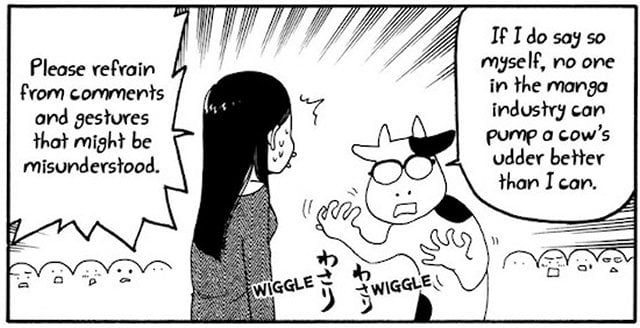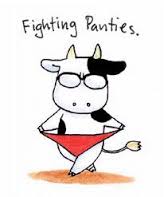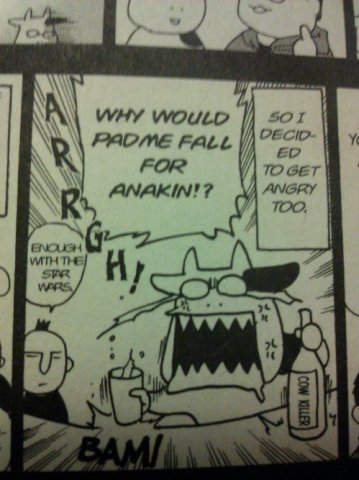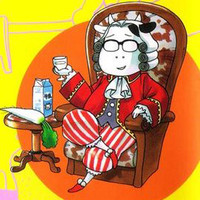From Noble Farmer
As the creator of the award-winning series Fullmetal Alchemist, Hiromu Arakawa is among the most successful manga artists of this century. The series has sold over 64 million volumes and earned two anime adaptations and two separate theatrical releases. It, as well as Arakawa’s other work, falls into the category of “shonen manga”: Japanese comics targeted at preteen and teenage boys. And, incidentally, Hiromu Arakawa is a pen name. Her real first name is Hiromi, and she is among the growing number of female artists in the shonen manga industry.
In a more enlightened world, this would not be a surprise. It wouldn’t even matter. But it is incredibly common to find online comments like “I had no idea the creator of Fullmetal Alchemist was a woman! Weird!” There is still a perception among people that women can’t write “boy’s stuff” or “action stuff.” However, Arakawa has her own words on the subject:
“It is often said that women are better to talk about emotions, to write dialogues that hit the nail on the head, and men know how to create stories with twists and turns. As for me, I think it’s difficult today to make a distinction between genres. Some men are really able to imagine sensitive and complex characters, while some women are able to create sometimes violent action scenes. Nowadays, each writer has their own specialty. It doesn’t matter if they’re a man or a woman.”
There are obviously still barriers for women in shonen manga. Hiromi Arakawa did not take on the more masculine “Hiromu” as a pen name for fun, but so her gender would not be used as an excuse for male readers to pass over her work. However, like J.K. Rowling, a fellow fantasy writer on the other side of the world who was forced to make a similar decision, Arakawa’s work became so successful that her gender is no secret.
She follows in the footsteps of a woman she cites as one of her influences, the creator of Inuyasha and Ranma ½, Rumiko Takahashi. The shonen mangaka (manga artist) Takahashi is not only one of the richest manga artists in Japan but is also said to be the best-selling female comics artist in world history. More female shonen mangaka have followed Takahashi and Arakawa, such as Kekkaishi creator Yellow Tanabe and Magi creator Shinobu Ohtaka.
Arakawa considers the growing number of female shonen mangaka a generational shift. “There were female readers who found those shonen very entertaining and often more interesting than the usual shojo manga [manga marketed to young women and girls]. Ten years later, we were old enough to draw and so we made boys’ manga. This explains the increased number of female drawers in this area.”
As such an influential and successful artist and an early explorer of a new frontier for women in manga, Arakawa’s life and work certainly warrants a thorough examination.
Arakawa is very reticent about her personal life, to the point where it is notoriously hard to find a picture of her. But she has revealed a lot of her family history and history about her art through interviews.
Arakawa’s self portrait
She will also often talk directly to her readers in the extras and afterwards of her manga, drawing herself as a bespectacled cow, which calls back to her childhood on a dairy farm. Her first cartoon self-portrait was the one she drew of herself wearing her “fighting panties” in the first volume of Fullmetal. She deeply regrets that it is the most featured image of her.
Arakawa is quite the geek herself, as a hardcore fan of Star Wars who was seriously tempted to buy a giant inflatable Darth Vader. She even has a notp, as her laments of “WHY DID PADME FALL FOR ANAKIN?” in one afterword reveal. I’m with you, Arakawa. I think everyone can agree the lady deserved better than what she got.
In addition, she declared herself a huge fan of Indiana Jones and a binge-watcher of B movies. “I love the way they make me think ‘what the hell is this? That’s crazy!’ yet still draw me in so that I watch the whole thing,” she says in the intro page of the first volume of Fullmetal. She says the B movies are what inspired her to write a madcap alchemy fantasy like Fullmetal. “As you read it, please criticize it by saying to yourself, ‘what kind of alchemy is that?,’” she encourages her readers.
Arakawa grew up together with her four siblings on a dairy farm in Hokkaido, a rural area of Japan. After graduating an agricultural high school much like the school that serves as the setting for Silver Spoon, a future manga she would author, Arakawa agreed to work on her parents’ farm for seven years before heading off to Tokyo to become a manga artist.
Arakawa both writes and draws her own manga. She has a very round and distinctive style of drawing and describes herself as a huge fan of drawing “muscles” and “old guys.” She also very much enjoys drawing voluptuous women and was gleeful when her editor allowed her to “keep the boobs” in one section of her work. When the amount of muscular people in her work was noted, she cried, “If I draw them too skinny, people will think my poor characters don’t eat! Men should be muscular and women should be va-va-voom!” As far as non-Takahashi artistic influences go, in the Fullmetal Alchemist: Profiles book she cites Norakuro author Suihō Tagawa; Yudetamago’s Kinnikuman; and Shigeru Mizuki, author of GeGeGe no Kitarō.
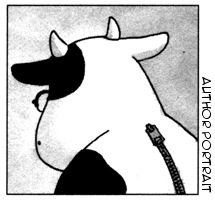
Many elements of Arakawa’s background as a Hokkaido farmer came to influence her work and her approach to life. Arakawa says that, through her farmer background, she learned the value of hard work. She learned through farming that you get back the amount of effort you put into something. “The more you love your animals, the more they give back to you. The more you take care of livestock, the better their meat will be.” This is not only the concept behind one of the major themes in Fullmetal Alchemist (equivalent exchange—“one cannot hope to gain anything without sacrificing an equal amount”), but it is something Arakawa puts into practice every single day of her life. It is clear from an examination of her career that she is a monstrously hard worker who puts a lot of effort into everything she does.
During her years working on the farm, she and her friends also created doujinshi (manga created by fans based on preexisting works), that got published in Yonkoma magazine. She also took oil painting classes. Arakawa made good on her dream to move to Tokyo and become a manga artist in 1999. She worked as an assistant to manga artist Hiroyuki Eto and published her first manga one-shot, Stray Dog, the same year. One can actually find a lot of similarities between this it and her magnum opus Fullmetal Alchemist.
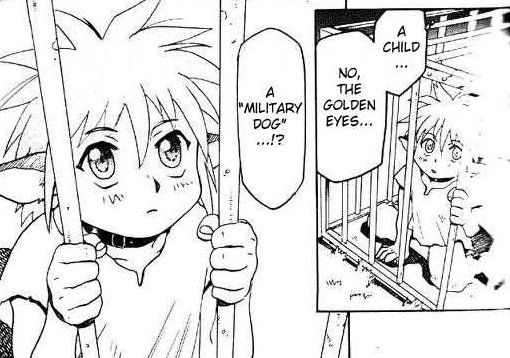
Panels from Stray Dog
The story depicts a man coming across a young girl who is a product of a genetic experiment done by the military. She is a literal “dog of the military,” as she is part dog.
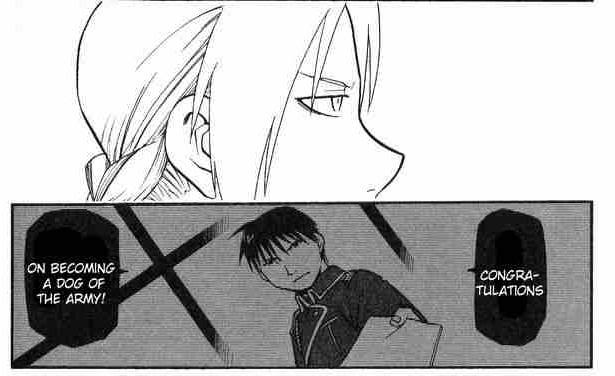
Panels from Fullmetal Alchemist
Fullmetal protagonist Edward Elric is a referred to as a “dog of the military” by the populace, since the military that employs him has a bad reputation. Like the character in Stray Dog, he wears his hair in a braid. He also has golden eyes, a characteristic that marks the “dogs of the military” in Arakawa’s earlier work. The one-shot was also directly referenced in FMA, with “Stray Dog” being a brand of liquor that characters were seen drinking.
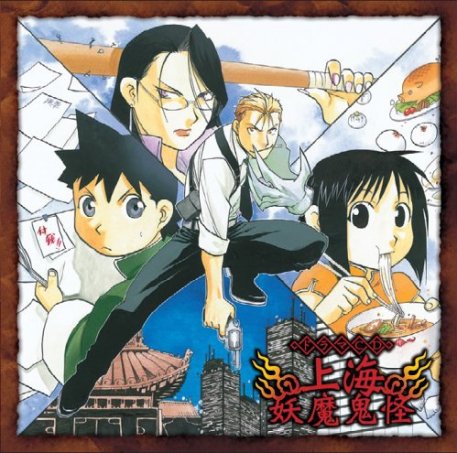
Cover art for Demons of Shanghai
In 2000, Arakawa published a chapter of a manga called Demons of Shanghai, a mainly comical piece that featured a group of demon hunters working in China.
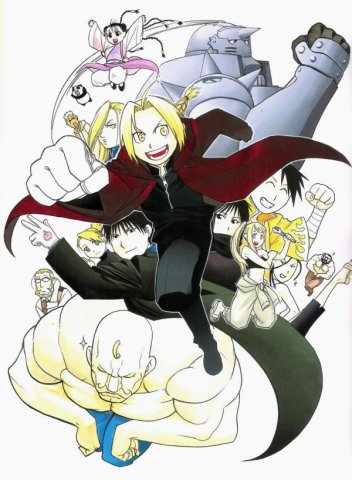
Cover art for Fullmetal Alchemist
Then, in July of 2001, she published the first chapter of Fullmetal Alchemist, which chronicles the adventures of two alchemist brothers, Edward and Alphonse Elric, as they work to regain their bodies after losing them in a botched attempt to bring their dead mother back to life. This series became a huge hit and received an anime adaptation in 2003.
Though Arakawa assisted in the initial development of the anime, she decided to let them work on the script on their own, as she thought it would be best for the anime and manga to have different endings, since her manga still had a lot of story to go. As a result, the 2003 anime diverges dramatically from the manga, as does the movie that finishes up the series, The Conqueror of Shamballa.
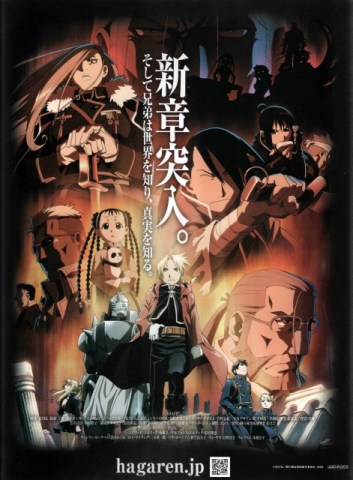
Promotional art for Fullmetal Alchemist: Brotherhood anime
However, Fullmetal was popular enough to warrant a second anime adaptation, so when Arakawa was nearing completion of the manga in 2009, a new and more faithful anime adaptation was announced. It was called Hagane no Renkinjutsushi: Fullmetal Alchemist in Japan and Fullmetal Alchemist: Brotherhood in the States. Arakawa shared the ending of her manga to the Brotherhood director, so that when the final chapter of the manga (chapter 108) was published in July 2010, the final episode of Brotherhood aired a few weeks after. The Sacred Star of Milos, a movie depicting an original sidestory for Brotherhood, was released in 2011.
The level of production and dedication Arakawa showed during the period she wrote Fullmetal Alchemist is where her commitment to hard work shines the most. It is really something to marvel at. Not only did she draw and write 40-plus pages a month, she drew color illustrations, did character designs for Fullmetal video games, completed illustrations for light novels, and assisted in production for both animes and movies. In order to coincide with Brotherhood’s release, she worked overtime and made the last chapters of Fullmetal 60-plus pages a month, with the last chapter over 100 pages long. In addition to all this, she had her first child in 2007 and did not take a maternity leave.
Her hard work certainly paid off, since as noted before, not only was Fullmetal tremendously successful, it won several awards—including the Shogakukan Manga Award in 2004 and the Seiun Award for Best Science Fiction Comic and the Tezuka Osamu Cultural Prize for Best New Artist in 2011.
But wait! There’s more! Arakawa did not just work on Fullmetal in the period of 2001-2010, but wrote a ton of other manga as well. This includes more chapters of Demons of Shanghai.
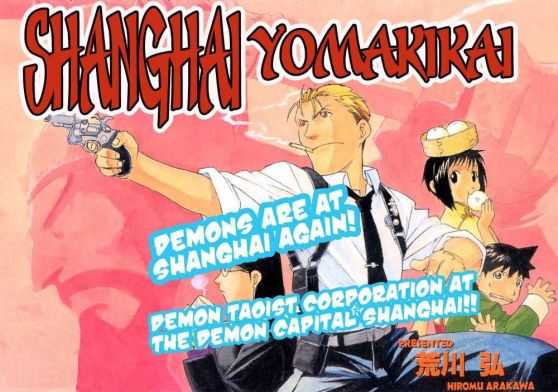
Demons of Shanghai cover art
In 2005, she published a manga called Raiden-18 , in which cheerfully corrupt scientist Dr. Tachibana creates a Frankenstien monster that she wishes to exploit for her own ends.
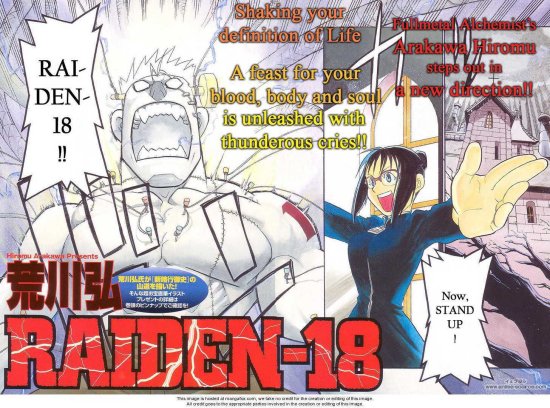
Panels from Raiden-18
In 2006 she published a one-shot called Souten no Koumori (A Bat in the Blue Sky), about a young girl/former ninja assassin trying to atone for her sins.
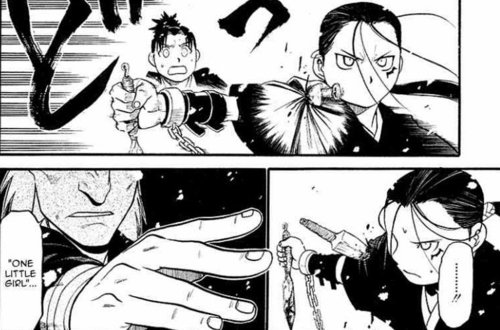
Panels from Souten no Koumori
The same year, she started the autobiographical manga Noble Farmer, in which she discussed her farming background. 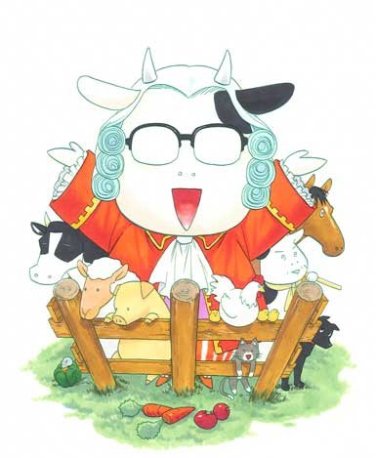
Noble Farmer cover art
She also illustrated and helped write the five-volume manga Hero Tales in 2006. Arakawa went so far as to travel to China to research this manga, which had a motif of Chinese wuxia drama and focuses on a young boy and his band of friends discovering their destiny as warriors.
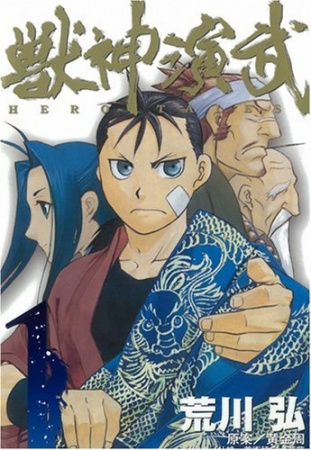
Hero Tales cover art
Arakawa is clearly very taken with China, as Chinese culture is a recurring element in her work. In addition to Hero Tales and Demons of Shanghai, Arakawa created the country of “Xing” in Fullmetal, with Xingese culture clearly being analogous to Chinese culture.
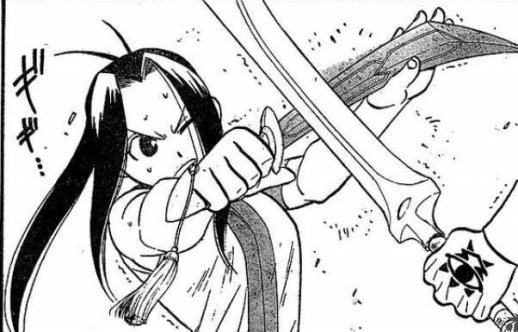
Panel of Laila Seiren from Hero Tales
Like Fullmetal Alchemist, Hero Tales also received an anime adaptation, though it differs dramatically from the manga. In the manga, for example, the protagonist’s little sister, Laila Seiren, develops into a hero in her own right. Almost half of the last volume is devoted to her epic battle against a boss villain that had already defeated her brother and killed several of her comrades. However, in the anime, Laila has no character arc and is relegated to damsel in distress status. Since Laila’s epic battle in the manga has several lines reminiscent of Fullmetal, I can’t help but wonder if it was Arakawa, not one of the other writers, who was responsible for Laila being a prominent hero with an actual character arc.
My speculation is not just borne from my own opinion that Arakawa tends to write well-rounded and prominent female characters. Arakawa herself has commented that she makes an active effort into maintaining a varied and complex female supporting cast. In one of the afterwords of her art books, she worried there were not enough female characters in Fullmetal Alchemist yet. More were introduced soon after.
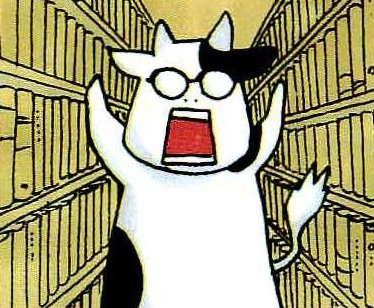
Arakawa’s self portrait
She also admitted that for Fullmetal, she wanted to bring Winry Rockbell (one of the main female characters) and other women in earlier to balance out what she thought was a low amount of women in the first chapters, but editorial denied her. (Ironically enough, Winry shows up within the first two episodes of both anime adaptations of the story, retroactively granting Arakawa’s wish.)
Arakawa states in volume 12 of Fullmetal that it was being surrounded by hard working women for most of her life that inspired her dedication to featuring hardworking, active women in her work. “Our family motto is ‘those who don’t work, don’t deserve to eat.’ Everyone has to work hard to make ends meet, including women and kids. That’s the reason there are so many working women in Fullmetal.”
It should be fairly obvious at this point that Arakawa is as hard working as any of the women she admires. Most people would want to take a break after the ridiculous amount of work she put into producing Fullmetal and all that other material. But Arakawa is not most people.
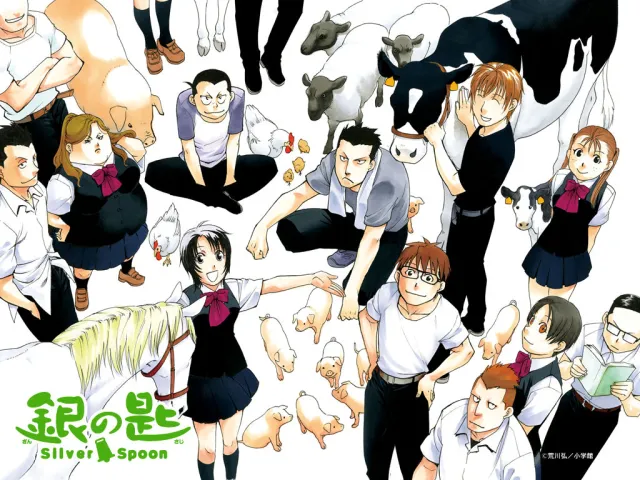
Silver Spoon cover art
After finishing Fullmetal Alchemist, in 2011 Arakawa began a slice-of-life farming manga called Silver Spoon, which is still ongoing. It was the 7th highest-selling manga in Japan in 2012 and has received both an anime adaptation and a live-action movie adaptation. It also won both the Manga Taisho Award and Shokagukan Manga Award.
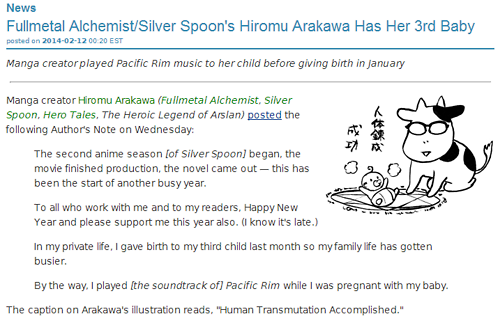
Anime News Network piece on Arakawa’s third child
While working on Silver Spoons, Arakawa had her third child. True to form, she started working and giving interviews just a few days later.
Silver Spoon is, by Arakawa’s own admission, an incredibly autobiographical manga. Its setting is an agricultural high school in Hokkaido, like the one Arakawa herself attended. She also states that several of the characters are based off real people, noting that the tough, shotgun-toting expert marksman pig farming teacher in the manga is based off a real woman who was a teacher at Arakawa’s own school. Perhaps the main character’s tendency to overwork himself is also autobiographical.
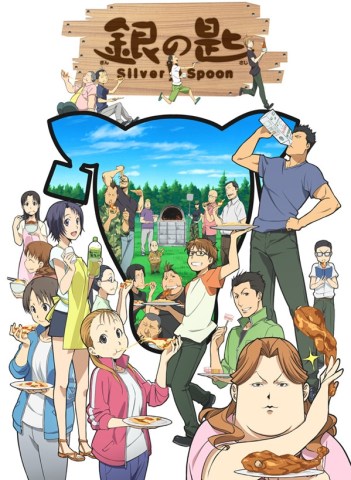
Promotional art for the Silver Spoon anime
Arakawa said one of her aims with the series was to let more people know about the realities of the farming industry. She especially wanted to communicate how rewarding agricultural work can be. Apparently, she was successful, as according to her, applications to agricultural high schools have increased since Silver Spoon became popular.
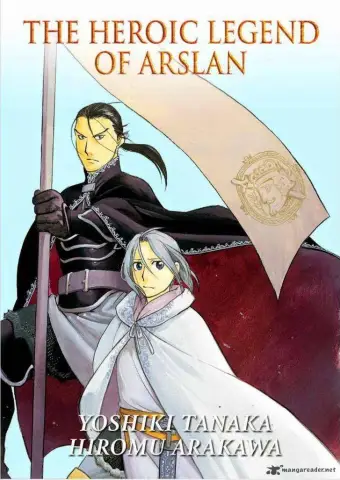
The Heroic Legend of Arslan cover art
Of course, Arakawa couldn’t contain herself to just working on one manga for long. In 2013 she started a manga adaptation of The Heroic Legend of Arslan.
So we know Arakawa is an incredibly dedicated professional, but what about her personality? Through the extras, she often talks about her hobbies and personality with her readers. People consider her to be hot-headed like many of her main characters (she is the type to shout at the screen when she plays video games). However, she considers herself to be like her more thoughtful supporting characters, specifically Fullmetal‘s long-suffering younger brother, Alphonse Elric. Arakawa has many older siblings herself.
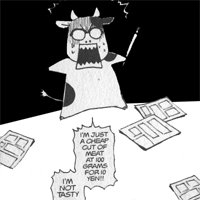
Another self portrait
Now that you’ve gotten to know Arakawa as a person, please join me next time where we will closely examine the recurring themes of her two major works, Fullmetal Alchemist and Silver Spoon. We will look at how Arakawa examines racial oppression, how she represents women, the research she puts into her manga, and the overall worldview her works promote. We will also discuss what might be deliberately subversive elements that challenge tropes that are commonly present in both the general area of shonen manga and the more specific genres her work falls into.
Caitlin Donovan is a longtime comic geek and internet blogger who is currently working on her MFA and her first novel. She formerly wrote for Big Shiny Robot and for a time helped run the blog When Fangirls Attack. These days, she mostly can be found blogging on her Tumblr, Lady Love and Justice.
- Presenting the Great Fullmetal Alchemist Anime Showdown
- All The Best Places To Watch Anime That Aren’t Actually In Japan
- GunxSword: The Best Big Damn Space Western You’ve Probably Never Seen
Are you following The Mary Sue on Twitter, Facebook, Tumblr, Pinterest, & Google +?



